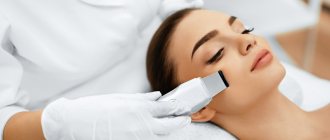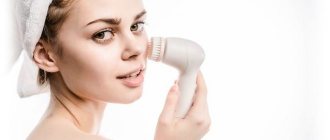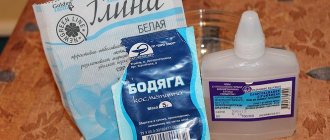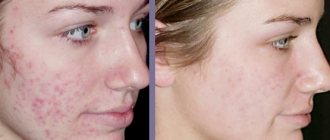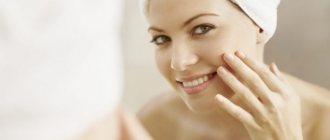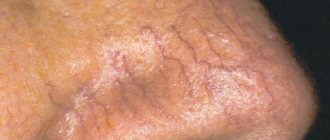Azelaine facial peeling is an effective, but at the same time very gentle procedure. It allows you to rejuvenate and heal even sensitive skin with rosacea, although exfoliants are usually contraindicated in this case.
It belongs to the group of chemical cleansers and is successfully used to treat acne and whiten skin.
It is also often used to exfoliate horn cells before other cosmetic procedures, which significantly improves the final result.
What is azelaine peeling?!
Azelaine peeling is a subtype of superficial chemical peeling for gently cleansing the skin and resolving some dermatological problems. The main component of the composition is natural azelaic (nonandioic, 1.7-heptane dicarboxylic) acid, which belongs to the group of dibasic saturated carbon compounds and is obtained by oxidative ozonation of oleic or linoleic acids, and is also found in wheat and barley. The substance normalizes metabolic processes and restores the cellular structure of the skin.
Reviews from cosmetologists
Among cosmetologists, the azelaine peeling procedure is gaining popularity, which is confirmed by reviews from specialists who have experienced the properties of this acid.
“I usually use it as a preparatory component for medium and deep chemical peels. This way the end result is more noticeable. The clients are happy."
“I don’t use this peeling in its pure form. I prefer to combine it with lactic or mandelic acids. The resulting cocktail allows me to reduce the number of procedures, which my patients welcome.”
“I’ve only recently been working with the azelaine composition, but I’ve already noticed how gentle it is. I come to my rescue if I have to deal with hypersensitive skin. At the same time, I start with a low concentration and gradually increase it.”
“I use azelaine to treat acne in teenagers. I'm afraid to upset the balance of young skin with other peels. Here, recovery occurs quickly, and inflammation is significantly reduced. At the same time, patients do not feel much discomfort.”
“I use this acid on thin, pigmented skin. I also noticed a good reaction of azelaine to the rosacea mesh. It is not possible to completely remove it, but reducing the intensity of its manifestation is quite possible.”
Indications for azelaine peeling
- Inflammatory and non-inflammatory forms of acne as part of complex therapy.
- Oily and seborrheic skin, enlarged pores.
- Demodicosis is an acne disease caused by skin mites.
- Folliculitis is an infection of the hair follicles.
- Hyperpigmentation of various origins: melasma, chloasma, lentigo, freckles.
- Prevention and correction of chrono- and photoaging: wrinkles, sagging, decreased tone, dryness, gray complexion.
- Sensitive skin with a tendency to peeling and redness.
- Cuperosis is a vascular “mesh”.
- Hyperkeratosis is a thickening of the upper layer of the epidermis.
- Skin defects: ingrown hairs, small scars, scars on the face and body.
- Preparation for serious cosmetic procedures: laser resurfacing, microdermabrasion, deep peelings and cleansing.
Contraindications for azelaine peeling
- Pregnancy, lactation.
- Increased body temperature.
- Acute inflammatory and infectious processes: herpes, pyoderma, microsporia.
- Malignant and multiple benign neoplasms.
- Severe damage to the cardiovascular, urinary and digestive systems.
- Damage to the skin: wounds, burns.
- Exacerbation of chronic dermatoses: psoriasis, eczema.
- Increased skin insolation.
- Constant use of hormonal medications, systemic and topical retinoids.
- Autoimmune diseases: systemic lupus erythematosus, scleroderma.
- Individual intolerance to ingredients.
Features of azelaic acid
- It is combined in peelings with mandelic, lactic, salicylic, and glycolic acids to enhance the effect and solve the assigned problems.
- Regulates the level of acidity in cosmetic products, therefore it is successfully used in cosmetology.
- It does not cause resistance to pathogenic microorganisms even with constant use, so courses of procedures are highly effective.
- It has a gentle exfoliating effect, not a scraping effect, unlike other fruit acids, so it is suitable even for sensitive skin.
- It has great “penetrating” ability, passes between the cells of the stratum corneum and quickly cleanses the skin.
- Reduces the activity of 5-alpha reductase and polyunsaturated fatty acids, therefore reducing excess sebaceous secretion.
- Azelaic acid derivatives in cosmetology are water-soluble, chemically stable compounds with improved whitening properties.
- It is perceived by the skin as a related chemical compound, since it is formed in small quantities as a result of fat metabolism and is found in epidermal cells.
Before and after photos
For comparison, photographs of problem skin are shown before chemical exposure to azelaine and after a course of 10 procedures.
Stages of azelaine peeling
- Consultation and examination - collecting anamnesis, identifying contraindications, designating a treatment regimen.
- Preparation - use of moisturizing creams with 5-10% AHA acids to adapt and smooth the skin 10-14 days before the start of the course.
- Sensitivity test - applying an exfoliant to the crook of the elbow for 30 minutes to detect allergic manifestations.
- Cleansing before peeling - removing impurities using milk or foam with natural moisturizing ingredients.
- Degreasing - rubbing with lotion with 3% glycolic acid to enhance penetration of ingredients.
- Protect mucous membranes, lips, and corners of the eyes with special preparations containing petroleum jelly or silicone polymers to prevent acid from entering vulnerable areas.
- Peeling - treatment of the skin with 15-30% azelaic acid with pH 1.8-3.0 in 1-3 layers by massaging for 5-10 minutes from the periphery to the center: forehead, temples, cheeks, chin, eyelids, nose, nasolabial triangle. The exposure time and number of layers may vary depending on the type of preparation.
- Removing the composition with cool water.
- Applying soothing agents - licorice extract, retinol, vitamin E and sunscreen.
Pre-peeling preparation
1. Before contacting a cosmetologist to perform chemical peeling using azelaic acid, it is important to collect a complete medical history listing the possible reasons why your facial skin needs this particular procedure. This step will help the doctor identify possible allergies to components of the drugs used, contraindications, compatibility or incompatibility of drugs with medications that the person is taking, and much more.
2. Based on the results of the tests and after a personal consultation, the cosmetologist assesses the state of health in general and the skin of the face in particular in order to create an individual course of pre-peel preparation, take into account the peculiarities of the technology of the procedure and select products for post-peel facial care.
3. During the period of pre-peeling preparation at home, it is necessary to regularly use light moisturizing creams or fluids with AHA acids, which will gradually prepare the skin for the main composition and enhance its effect. If for some reason it was not possible to prepare the skin for azelaine peeling using special products, it is necessary to notify the cosmetologist about this so that the doctor sets the minimum exposure time during the first procedure of the course. However, experts recommend paying attention to pre-peeling preparation in any case, so that the facial skin does not respond to the effects of the chemical with an unexpected and unfavorable reaction.
4. Be sure to test for skin sensitivity to azelaic acid. A few days before peeling, a small amount of the drug is applied to the elbow area and the skin's reaction is assessed.
Actions of azelaine peeling
- Anti-inflammatory - reduces painful rashes and prevents redness from recurring in the skin and hair follicles.
- Sebum regulating – normalizing the functioning of the sebaceous glands, reducing acne and enlarged pores.
- Keratolytic - stimulation of exfoliation of the stratum corneum, inhibition of keratinocyte growth and cleansing of pores.
- Antiseptic - stopping the spread of harmful microorganisms - fungi and bacteria, preventing infection of the skin.
- Whitening - regulation of the distribution and production of melanin.
- Antioxidant - neutralizes toxins and free radicals.
- Renewing - normalization of microcirculation processes and strengthening of blood vessels.
- Regenerating and rejuvenating - restoring cell division, stimulating barrier structures, increasing tone, reducing wrinkles and evening out tone.
Course of procedures
The basic duration of sessions is 5-12 procedures with an interval of 1 time every 7-14 days. The technique can be repeated after 2-4 months, depending on the condition of the skin and the goals being achieved. Maintenance course - once every 6-8 months.
Side effects
Immediate (2-4 weeks after procedure):
- Dry skin after azelaine peeling is a natural reaction to the action of the peeling. It is removed with soothing gels, masks with aloe, collagen, and chamomile extracts.
- Swelling is an expected manifestation of the composition. Corrected with moisturizing preparations with antioxidant substances.
- Exacerbation of herpes infection - occurs due to individual characteristics or incorrectly collected anamnesis. Controlled by prescribing antiviral drugs.
- Attachment of a secondary infection - manifests itself due to non-compliance with recommendations or violation of antiseptic rules during the procedure. Antibacterial drugs are prescribed.
- An allergic reaction is a response mechanism to the penetration of azelaic acid in the absence of a preliminary sensitivity test. Antihistamines and local regenerating substances are taken.
- Erythema is post-peeling redness of the skin, which is observed within 2-3 hours. In case of persistent manifestations, procedures are carried out to normalize microcirculation in skin cells.
- Hyperpigmentation is a rare undesirable manifestation that occurs when the steps of the procedure are not followed.
- Exacerbation of acne is a possible consequence, which disappears on its own 2-3 months after peeling. Additionally, anti-inflammatory gels (Skinoren, Kuriosin) are prescribed.
Persistent (4-10 weeks after using azelaine peeling) - keloid scars, depigmentation - occur due to internal disruptions in the body, incorrect medical history, and ignoring the recovery period. Restorative drugs and procedures are used.
Rehabilitation period
- Do not apply decorative cosmetics for 24-48 hours.
- Do not visit the bathhouse, swimming pool, sauna, or solarium for 14 days.
- For 5-14 days, use light texture care products to moisturize.
- For 7-15 days, cleanse the skin with milk, foam with aloe extract, collagen, chamomile.
- Apply regenerating and restorative components for 3-5 days.
- For 5-10 days, do not carry out aggressive procedures: scrubs, polishing.
- Always use sunscreens with an SPF of 30 or more. For example, cream block for tanning and age spots, SPF 45.
Possible complications
As already noted, virtually no side effects are observed after the azelaine peeling procedure. Reviews extremely rarely contain information about negative consequences, but this still happens. Among the complications women name:
- Overdrying, which can be easily removed with creams and masks containing collagen, tea tree extracts, chamomile, vitamin E.
- A skin infection that requires antibiotics to treat.
- Exacerbation of herpes.
- Allergy. In this case, you should definitely consult your doctor.
To avoid negative consequences, you need to choose a specialist wisely and strictly follow the recommendations of the chosen cosmetologist.
Self-use of azelaine peeling
- At home, azelaic acid is used in low concentrations - up to 15%.
- A preliminary consultation with a doctor is carried out to determine the type of procedure and identify possible allergic manifestations.
- The skin is cleansed and degreased with a glycolic acid-based tonic under sterile conditions.
- The delicate areas around the treated areas are protected with Vaseline.
- Azelaine peeling is rubbed into the skin with massage movements for 10 minutes, then washed off with chilled water.
- After the procedure, moisturizers are used and generally accepted post-care recommendations are followed.
Recommendations from cosmetologists
The question often arises about the length of time azelaine remains on the skin of the face. Cosmetologists identify several factors that should be taken into account when choosing how long to keep the components of azelaine peeling and what concentration to use.
Determining factors include:
- Presence/absence of preliminary preparation of the person;
- Sensitivity threshold of the patient's skin.
In the absence of a prepared surface or a high predisposition of the dermis to irritation, it is suggested to use a gentle composition with a low percentage of acidity for a short time (3-4 minutes). Subsequently, the concentration and time can be gradually increased. The maximum permissible acid percentage is 30%. The upper limit of the time frame is 10-15 minutes.
Advantages of azelaine peeling
- Versatility - carried out for any phototype.
- All-season - does not increase skin sensitivity to sunlight.
- Highly effective with repeated use - no pathogenic microorganisms resistant to peeling.
- Atraumatic and delicate impact.
- Availability and ease of use.
- Activity and safety.
- Short recovery period.
- Well tolerated - azelaic acid is a natural substance for the body.
Minuses
- Course methodology.
- There is a risk of side effects.
- Low effectiveness for severe and progressive skin defects.
